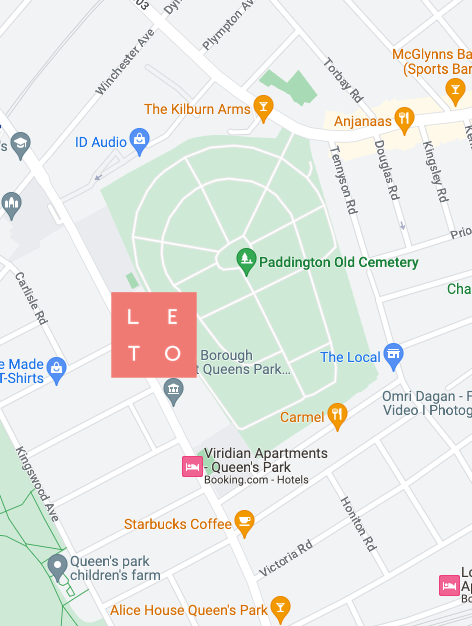
Close
Enquiry
Please see contact information below or complete the form and we will get in touch with you.

Parsons Green
3rd Floor Brigade House
8 Parsons Green
London
SW6 4TN

Queen's Park
2nd Floor
105-109 Salusbury Road
London
NW6 6RG

Jesse's House
8-10 Heathmans Road
Parsons Green
London
SW6 4TJ
Understanding Prolapse

What Is Prolapse?
Pelvic Organ Prolapse (POP) occurs when the muscles and tissues supporting the pelvic organs become weak or loose, and one or more of the pelvic organs press into or out of the vagina. The different types of pelvic organ prolapse depend on the pelvic organ affected. The most common types include:
- cystocele/front wall prolapse – the most common type of pelvic organ prolapse, when the bladder bulges into or out of the vagina
- rectocele/back wall prolapse – when the rectum bulges into or out of the vagina
- uterine – when the uterus bulges into or out of the vagina
- enterocele – where part of the small intestine bulges into the vagina
What Causes Prolapse?
The cause of prolapse is often multifaceted as many factors can contribute to prolapse, including ageing, pregnancy, childbirth, tissue type, weight, and menopause-related changes. Changes such as repeated force, like chronic cough or constant straining due to constipation, can also contribute to laxity.
What Are the Symptoms of Prolapse?
Approximately one in three women experience symptoms of prolapse. Women often describe the following symptoms:
- the sensation of a bulge / a visible bulge at the entrance of the vagina
- back or lower abdominal pain
- a feeling of heaviness or dragging
- incontinence
- the feeling of incomplete emptying of the bladder or bowels
- a strong urge to empty your bladder or bowel
- recurrent urinary infections
- difficulty inserting or keeping tampons in
- pain when having sex
It is also common for women to experience good days and bad days, or for symptoms to vary throughout the day depending on their activities, or at different times during their menstrual cycle. Symptoms can cause little to no bother, but for some women, the symptoms can have a huge impact. Let’s face it if things aren’t right ‘down there’ – nothing feels right.
Is Prolapse Treatable?
The great news is there is so much that can be done to help and manage POP! Depending on your presentation, your specialist pelvic health physiotherapist using several strategies to treat and rehabilitate your prolapse:
- OPTIMISING YOUR PELVIC FLOOR FUNCTION
Given your pelvic floor muscles are the muscles that help support your pelvic organs, addressing their function is vital.
Your physiotherapist will assess your pelvic floor muscles through vaginal examination and/or by using real-time ultrasound. They will evaluate the function of your pelvic floor muscles and assess whether you can contract and relax these muscles. They will teach you how to exercise these muscles correctly and will provide you with a pelvic floor or breathing program tailored specifically for you.
- A PERSONALISED EXERCISE PROGRAM
Research shows that you can reduce prolapse symptoms and stop the prolapse from getting worse through a personalised exercise program. This might include in-clinic rehabilitation with our team, an app-based home exercise prescription, participation in our clinical Pilates program The LETO Method – or a combination of these.
Improving the strength, coordination and flexibility of the pelvic floor and supporting muscles can optimise the support of the pelvic organs from the front, back and underneath which can reduce any symptoms you may experience.
- LOOKING AFTER YOUR BLADDER & BOWEL
Constipation and straining to empty your bowels can put increased pressure on the pelvic floor muscles and supporting tissues and fascia, contributing to worsening prolapse symptoms. Improving fluid and fibre intake, putting your feet up on a footstool to empty your bowel, and eating three nutrient-rich meals a day can all help. If you are struggling with constipation, tell your physiotherapist who will be able to guide you further.
Many women with a bladder prolapse, may experience a feeling of incomplete bladder emptying or leaking as they stand up after emptying their bladder. If this is the case, avoid rushing to empty, when you think you are finished wait another 30 seconds, rock backwards and forwards, then stand up and sit down again before emptying your bladder again. This can help empty any urine that was retained and reduce leaking after emptying
- STRATEGIES TO ENJOY PAIN-FREE SEXUAL INTERCOURSE
Just because you have a prolapse doesn’t mean you shouldn’t have or can’t enjoy sex. The vagina is a flexible strong structure, so having sex with a prolapse is safe for both you and your partner.
For sex to feel comfortable and enjoyable the vagina needs plenty of time to self-lubricate and expand to accommodate the penis, therefore foreplay is vital. Intimate touch and or oral sex can also be a great way to achieve clitoral stimulation to increase your pleasure. Using a lubricant can reduce friction and discomfort and make sex more comfortable for both parties. YES and Sylk is a great brand to start with. If you are using condoms for contraception, is it also important that you use a water-based lubricant that will not degrade the condom.
If despite using lubricant you still experience dryness, tell your physiotherapist who will be able to recommend a vaginal moisturiser and consider if any medicated creams may be beneficial during the postnatal period.
Depending on your anatomy there may be some positions that feel more comfortable. If you are on top, you can control depth and speed which may make you feel more confident, however, some women feel more symptomatic in this position. Play around with different positions to find the ones that work best for you.
- SPECIFIC LIFESTYLE CHANGES
Keeping active and maintaining a healthy weight have been shown to reduce the risk of prolapse and reduce the symptoms women experience. It can initially be hard to know what exercises are best to complete when living with prolapse, but our specialist pelvic health physiotherapists will be able to guide you depending on the findings of your examination.
Generally, impact and weight-based resistance training put increased pressure on the pelvic organs and pelvic floor complex. It is important that before returning to these exercises you are confident in your breathing, pelvic floor and movement strategies to reduce the risk of worsening your prolapse. Exercises such as supervised Pilates, swimming and walking are all great exercises, to begin with, if you have a prolapse.
There is no such thing as the wrong exercise, but there may be such thing as the wrong time, and a graded exercise programme is normally needed to get you back to your goals.
- PESSARY SUPPORT
A pessary is a silicone device that fits into the vagina to help support any type of prolapse.
A pessary can be useful to help you continue chosen activities which may typically worsen your prolapse, or it may be necessary to wear the pessary all of the time.
The decision about what type of pessary each woman should use and when it should be worn depends on the type of prolapse and the symptoms that cause it.
Your specialist pelvic health physiotherapist will determine this for you. The pessary needs to be fitted correctly and it may take several attempts to get the right one.
If this is not possible to address your prolapse with the above measures, surgical intervention may be considered. If this is indicated your physiotherapist will discuss this with you and can recommend the best person to see to discuss your options further.
We hope you find this information useful. Should you have any questions or find these strategies are not helping, please don’t hesitate to contact us so we can guide you further.

